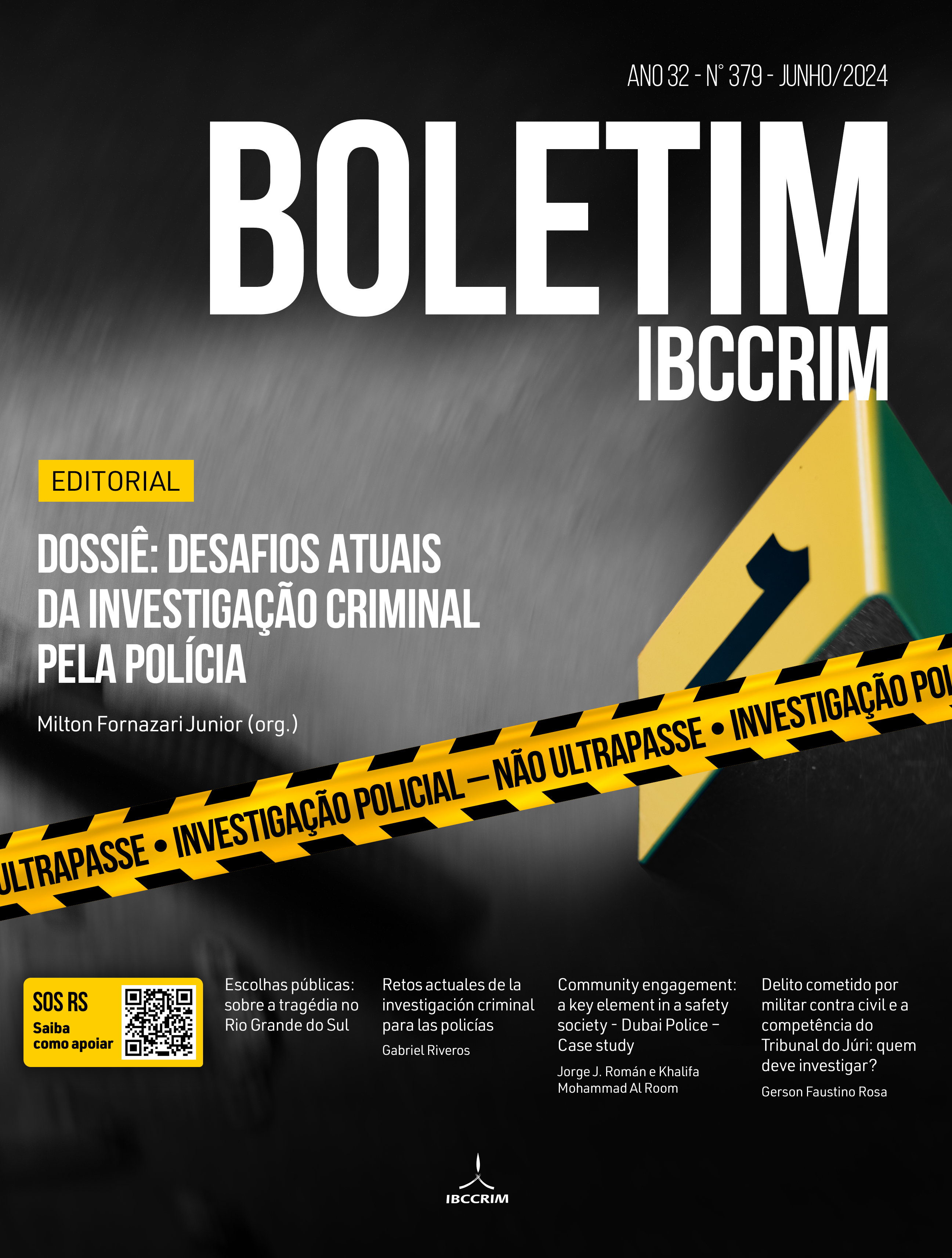Algorithmic racism, reinforcement of prejudice and the use of AI: perspectives and challenges for digital criminal investigation
DOI:
https://doi.org/10.5281/zenodo.11175558Keywords:
Algorithmic Racism, AI Bias, Digital Criminal Investigation, Technological Challenges in Justice, Prejudices and StigmasAbstract
This article explores the duality of artificial intelligence (AI) in the field of criminal investigation, highlighting both its transformative potential and the significant challenges it presents, especially regarding the reinforcement of biases and the emergence of algorithmic racism. With the increasing adoption of AI systems, it becomes imperative to direct these technological advancements towards reinforcing democratic principles, critically examining the perspectives of police use of AI. This work aims to identify and analyze manifestations of algorithmic racism and biases reinforced by AI technologies in criminal investigation. By addressing these issues, it seeks to contribute to the debate on how to overcome these challenges, promoting an investigative practice that respects and protects individuals' fundamental rights while harnessing the benefits of technological innovation.
Downloads
References
Barroso, L. R. (2023). Curso de Direito Constitucional Contemporâneo (11th ed.). Saraiva Jur.
Benjamin, R. (2019). Race After Technology: Abolitionist Tools for the New Jim Code (1st ed.). Polity.
Berk, R., Heidari, H., Jabbari, S., Kearns, M., & Roth, A. (2021). Fairness in Criminal Justice Risk Assessments: The State of the Art. Sociological Methods & Research, 50(1), 3–44. https://doi.org/10.1177/0049124118782533
Bichara, A. de A., & Cascardo Jr, A. G. (2023, May). Inquérito Policial e Proibição de Viés de Confirmação. Jus.Com.Br. https://jus.com.br/artigos/104335/inquerito-policial-e-proibicao-de-vies-de-confirmacao-rebatendo-mitos-historico-doutrinarios-com-base-na-constituicao-e-em-tratados-internacionais
Brahan, J. W., Lam, K. P., Chan, H., & Leung, W. (1998). AICAMS: artificial intelligence crime analysis and management system. Knowledge-Based Systems, 11(5–6), 355–361. https://doi.org/10.1016/S0950-7051(98)00064-1
Constituição da República Federativa do Brasil, (1988) (testimony of Brasil). https://www.planalto.gov.br/ccivil_03/constituicao/constituicao.htm
Buolamwini, J., & Gebru, T. (2018). Gender Shades: Intersectional Accuracy Disparities in Commercial Gender Classification. Proceedings of Machine Learning Research, 81, 1–15. https://proceedings.mlr.press/v81/buolamwini18a/buolamwini18a.pdf
Felzmann, H., Fosch-Villaronga, E., Lutz, C., & Tamò-Larrieux, A. (2020). Towards Transparency by Design for Artificial Intelligence. Science and Engineering Ethics, 26(6), 3333–3361. https://doi.org/10.1007/s11948-020-00276-4
Hany Shaban Elanany, A. E. M. E. (2023). The Use of Artificial Intelligence in Investigating, Combating and Predicting Various Crimes through Understanding the Psychology of Perpetrators. Journal for ReAttach Therapy and Developmental Diversities, 6(10), 303–316. https://jrtdd.com/index.php/journal/article/view/1110
Johnson, G. M. (2021). Algorithmic bias: on the implicit biases of social technology. Synthese, 198(10), 9941–9961. https://doi.org/10.1007/s11229-020-02696-y
Kaplan, A., & Haenlein, M. (2019). Siri, Siri, in my hand: Who’s the fairest in the land? On the interpretations, illustrations, and implications of artificial intelligence. Business Horizons, 62(1), 15–25. https://doi.org/10.1016/j.bushor.2018.08.004
Larsson, S., & Heintz, F. (2020). Transparency in artificial intelligence. Internet Policy Review, 9(2). https://doi.org/10.14763/2020.2.1469
Milgram, S. (1974). Obedience to Authority: An Experimental View (1st ed.). Harper & Row.
O’Neil, C. (2017). Weapons of Math Destruction: How Big Data Increases Inequality and Threatens Democracy (1st ed.). Crown.
Saura, J. R., Ribeiro-Soriano, D., & Palacios-Marqués, D. (2022). Assessing behavioral data science privacy issues in government artificial intelligence deployment. Government Information Quarterly, 39(4), 101679. https://doi.org/10.1016/j.giq.2022.101679
Downloads
Published
How to Cite
Issue
Section
License
Copyright of published articles belongs to the author, but with journal rights over the first publication and respecting the one-year exclusivity period. Authors may only use the same results in other publications by clearly indicating this journal as the medium of the original publication. If there is no such indication, it will be considered a situation of self-plagiarism.
Therefore, the reproduction, total or partial, of the articles published here is subject to the express mention of the origin of its publication in this journal, citing the volume and number of this publication. For legal purposes, the source of the original publication must be consigned, in addition to the DOI link for cross-reference (if any).












